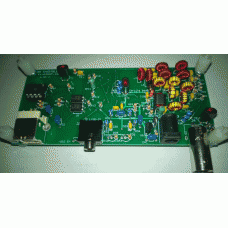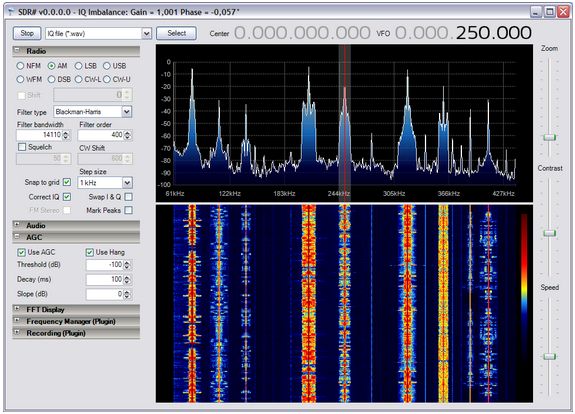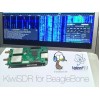Shopping Cart
0 item(s) - R0.00- 3D Printing and Plastic peripherals (8)
- 433Mhz and Lora (9)
-
Amateur Radio (651)
- - Antenna Analyzer (12)
- - APRS (12)
- - ATU (5)
- - CW (1)
- - Digital Modes (9)
- - DMR (4)
- - Echolink (10)
- - Enclosure (13)
- - Eshail-2 (QO-100) (67)
- - GPS (8)
- - iGate (1)
- - Microcontrollers (43)
- - Microphone (1)
- - Power Supply (7)
- - Programming Cable (6)
- - QRP (9)
- - Radio interface (21)
- - Receiver (9)
- - Repeater (4)
- - RF Amplifiers (20)
- - RF Kits (19)
- - RF modules (116)
- - Rotator (1)
- - SDR (75)
- - Spectrum Analyzer (4)
- - SWR (9)
- - Transceiver (59)
- - WSPR (5)
- Antennas and Acc (320)
- Audio and Video (28)
- Bargain Box (1)
- Battery (3)
- Bluetooth (11)
- Cables (37)
- Computer Peripherals (104)
- Connectors (90)
- Data acquisition (1)
- Display (2)
- Electromechanical (25)
- Enclosure (12)
- GPS (6)
- Hardware (3)
- Home Automation (128)
- Inverter (9)
- Liquid (7)
- Lora (8)
- Microcontrollers (119)
- Modbus (3)
- MQTT (14)
- Network Radio (3)
- Networking (8)
- Power (133)
- Power supply (49)
- Radio Interface (17)
- RF Modules (142)
- ROIP (2)
- Satellite (93)
- Security (13)
- Sensor (17)
- Solar (14)
- Test and Measurements (66)
- Tools and Equipment (8)
- VOIP (10)
- Weather (1)
Softrock Ensemble RX III (HF)(Kit)
Ex Tax: R1,410.41
Add to Compare
Ensemble RX III Home - Band: HF (Kit)
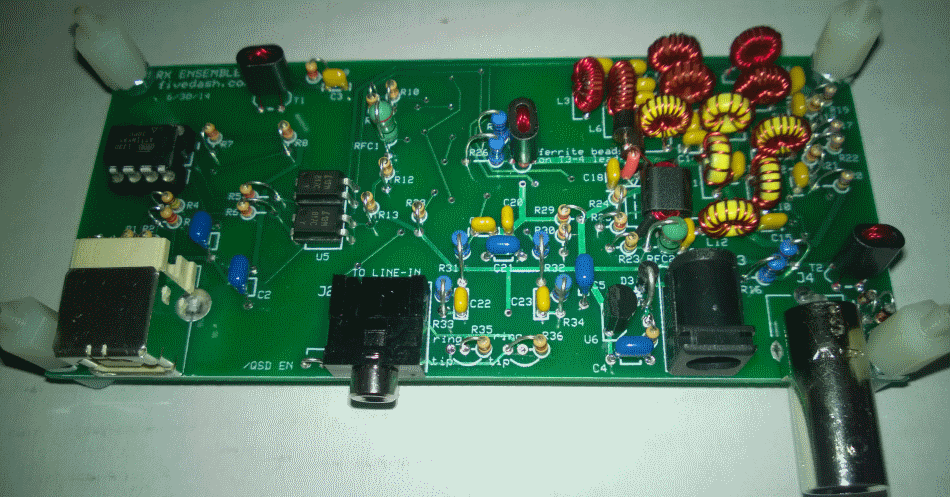
Introduction
General Info
The Ensemble RX III kit and its 4.5: X 2" board representing the culmination of a long line of Softrock SDR receivers from Tony Parks, KB9YIG. The line began with the Softrock 40 RX and went through several iterations of receivers. The most recent receiver was the Ensemble RX II with an automatically switched bandpass filter. This current kit is a refinement on that kit and further streamlines the kitting process for Tony Parks, the designer and supplier.
The differences between the Ensemble RX II and RX III are:
- The RX III is HF only (it does not offer LF and HF options), and
- The RX III provides 9.5dB of pre-amplification on the highest band group (Band 3: 15m/12m/10m).
Tony's schematics can be downloaded via the following links:
Band Coverage
The Ensemble RX III kit provides coverage of HF ham bands from 160-10m, in four different optional "super bands" (each with underlap and overlap within the parameters of the associated bandpass filter):
- Band group 0: 160m - Continuous coverage from 1.8 to 4.0 MHz (attenuated)
- Band group 1: 80m and 40m - Continuous coverage from 4.0 to 8.0 MHz (attenuated)
- Band group 2: 30m, 20m, and 17m - Continuous coverage from 8.0 to 16 MHz
- Band group 3: 15m, 12m, and 10m - Continuous coverage from 16 to 30 MHz (preAmplified)
The band coverage is via 4 switchable "band groups" ("superbands"). Band switching is performed under program control, in conjunction with programmatic control of the receive frequency. This control is provided by an Atmel ATTiny85 micro-controller, acting as a USB device to control the Si570 programmable oscillator and automatically switch to the appropriate band group (0-3) as the frequency changes.
As a welcome improvement over earlier models, the Ensemble line of kits provide pcb-right-angle jacks for all external connections: Antenna, USB from the PC, I/Q output to the PC, and Power to the Board. Thus, once built, the kit can be placed in a suitable enclosure and handled thereafter as a "blackbox peripheral" to the PC.
The design of the Ensemble RX is very similar to the receiver design of its sibling Ensemble RXTX. The major difference is the greater band coverage of the Ensemble RX kit (roughly 4 "superbands" on the RX vs. 1 "superband" on the RXTX) and the addition of the 9.5 dB preamp for the high band group..
This kit is an excellent value for both the licensed amateur and the SWL who is comfortable with building electronics kits. The skill level and experience requirements are medium-level because of the small size of the components, the requirement to be able to solder SMT parts, and the requirement to wind and install inductors. Thousands of builders have proven this is not an insurmountable set of requirements. If you are new at this, you should try one of Tony's sub $20 monobander RX kits as a "starter/learner" kit.
Recommended Enclosure
Tom KM5KH offers a very nice enclosure for the Ensemble RX line.
Build Stages
This kit is built in succeeding stages. Each stage is testable upon completion.
The stages in the build are, in build order:
- Power Supply
- USB Power Supply
- Local Oscillator and Control
- Quadrature Clock Generator
- Auto Band Pass Filters
- Quadrature Sampling Detector
- Operational Amplifiers
Theory of Operaton
Basic Theory
For a very readable (if somewhat dated) presentation of the fundamentals of SDR receivers, see the presentation by Bob, G8VOI..
Also, dont forget to check out this excellent video review of the Ensemble RX II by Alan Wolke, W2AEW. While it addresses the RX II, it is applicable to this RX III receiver as well. Just ignore the references to the RX II's LF option and recognize that the RX III has the pre-amp added to the band 3 filter chain:
Block Diagram
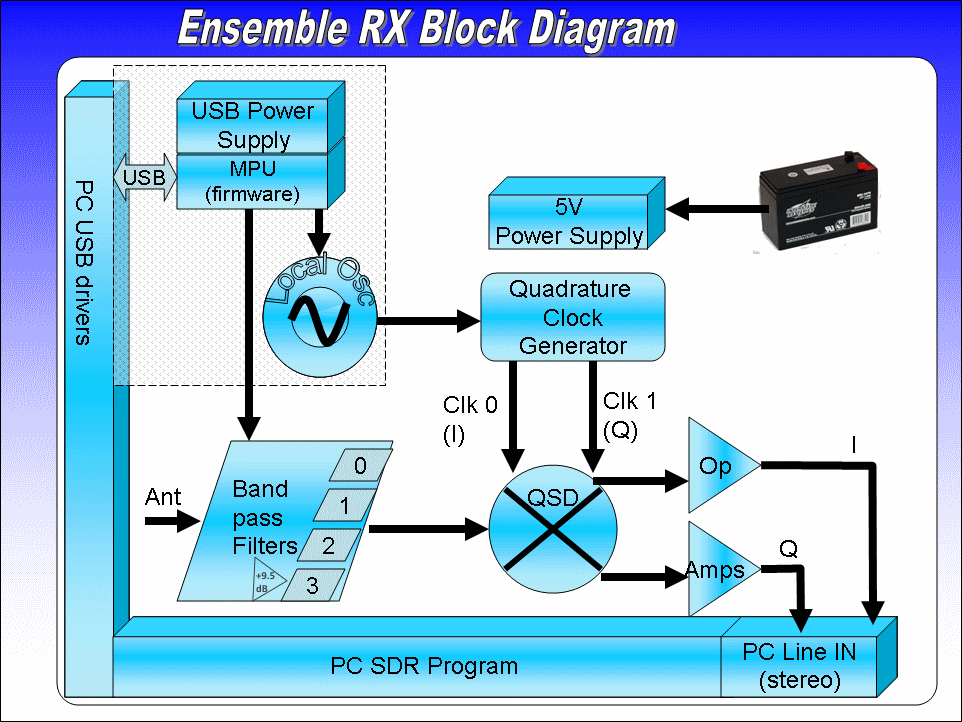
This receiver implements a quadrature sampling detector to produce low frequency I and Q signals for input to the stereo line in inputs of a PC sound card. The I and Q signals are the product of the quadrature sampling detector (QSD) stage, in which bandpass filtered "chunks" of RF are mixed with quadrature clock signals to produce the down-converted I and Q signals. These products (the I and Q pairs) are identical to each other in all respects except phase, where they are 90 degrees apart.
The I/Q products of the QSD ("mixer"), when input to the appropriate SDR program through the PC's STEREO line-in soundcard input, result in a spectrum display on the PC which will show signals arrayed around a "center frequency". This "center frequency" is the frequency of the I/Q outputs from the Quadrature Clock Generators. The bandwidth of the signals either side of the center frequency will be approximately equal to the sampling rate of the PC's sound card. Thus, if the local oscillator is tuned to produce 28.4 MHz to the Quadrature Clock Generators, they will output two signals (I and Q clocks) at 7.1MHz (the "center frequency"). If the PC's sound card has a 48 kHz sampling rate, then the SDR program can translate the QSD's I/Q outputs into a chunk of spectrum that is 24 kHz either side of the center frequency of 7.1 MHz: i.e, 7.076 - 7.124 MHz.
As the user tunes the receiver, varying the frequency of the local oscillator, the micro-controller tracks the frequency and switches the appropriate bandpass filter into the RF chain. The SDR program's display will update to show the new center frequency and adjust the scale to reflect the current +/- bandwidth around that center frequency. At all times, the operator can see all signals that are within this movable "window" (whose total width is 48, 96, or 192 kHz, depending upon the sampling rate of the PC's soundcard).
The receiver is controlled via a USB connection from the PC. This USB connection provides a "USB 5V" bus for the local oscillator and micro-controller. A separate 3.3 V voltage regulator on the 5 USB 5 volt bus provides power to the programmable oscillator, the Si570.
The RX has an Atmel ATTiny85 micro-controller unit which, acting as a USB device, and on the "USB 5V" rail, controls the frequency output of the programmable local oscillator (Si570) and provides two switching signals which can be used to select one of four filter banks in the band pass filter
The output of the local oscillator is at a frequency which is 4 times the desired center frequency of the receiver and is consumed in the Quadrature Clock Generators.
The Quadrature Clock Generators divides the local oscillator frequency by 4 to produce two clock signals - QSE Clk 0 and QSE Clk 1 - which will be used to clock the QSD stage. These I and Q clock signals are identical in all respects but phase (they are in quadrature - 90 degrees phase separation).
Rf at the antenna jack is filtered through the Bandpass Filter Stage, where one of four "chunks" of the HF band is selected by the micro-controller, based upon the tuning of the programmable Local Oscillator. The signal is attenuated for the two lower bands and pre-amplified for the high band. The filtered (and/or attenuated/amplified) RF is passed as input to the QSD Stage.
The Quadrature Sampling Detector (QSD) Stage acts very similar to a mixer. It incorporates a high-speed switch that is clocked by the two QSD clock signals from the Quadrature Clock Generators and switches the incoming RF into a RC sampling network. The result is two outputs at low frequency and also in quadrature, which are the down-converted, baseband analogs of the incoming RF signals.
The outputs of the QSD stage are then fed into a pair of high gain Operational Amplifiers to produce the I and Q baseband signals which will be input to the PC soundcard's stereo Line In.
Schematic

Board Layouts
Topside
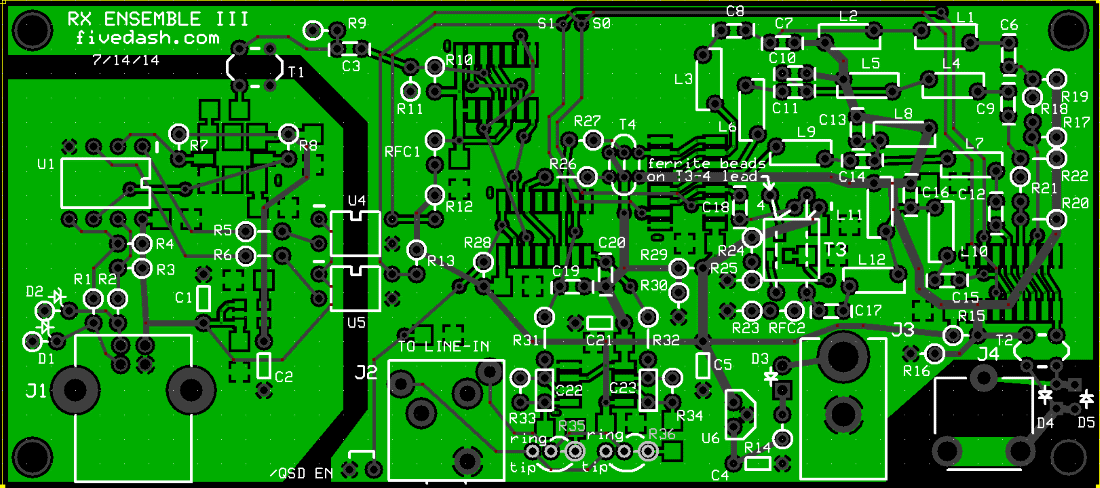
Underside
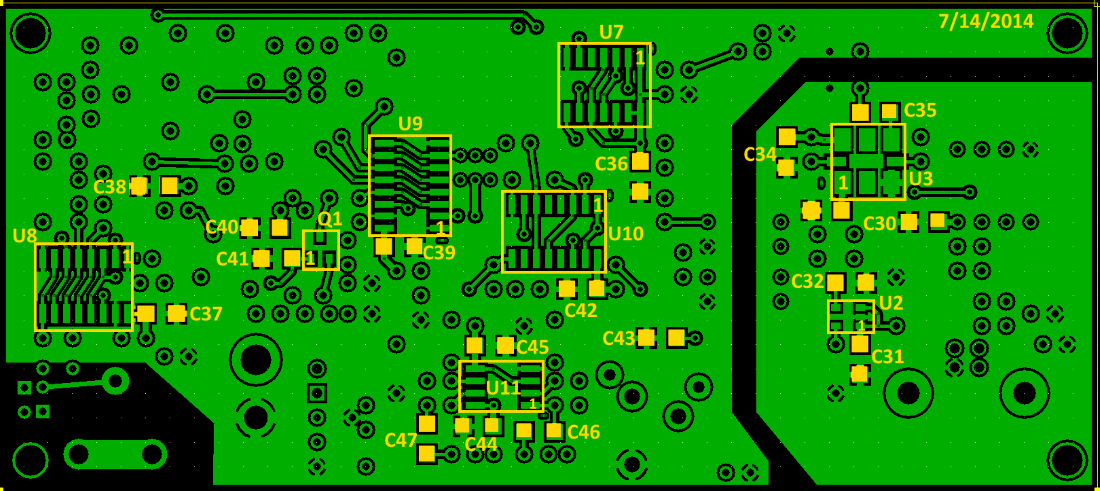
Trouble-Shooting Layout
Here is also a "see through" bottom view that shows both sides of the board, including the topside silk screening (reversed, of course) to aid in trouble-shooting from the bottom of the board.
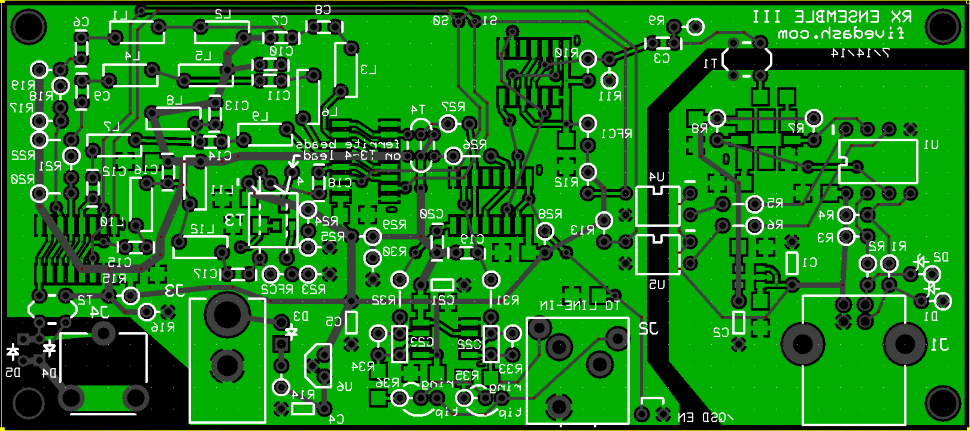
Completed Images
Topside
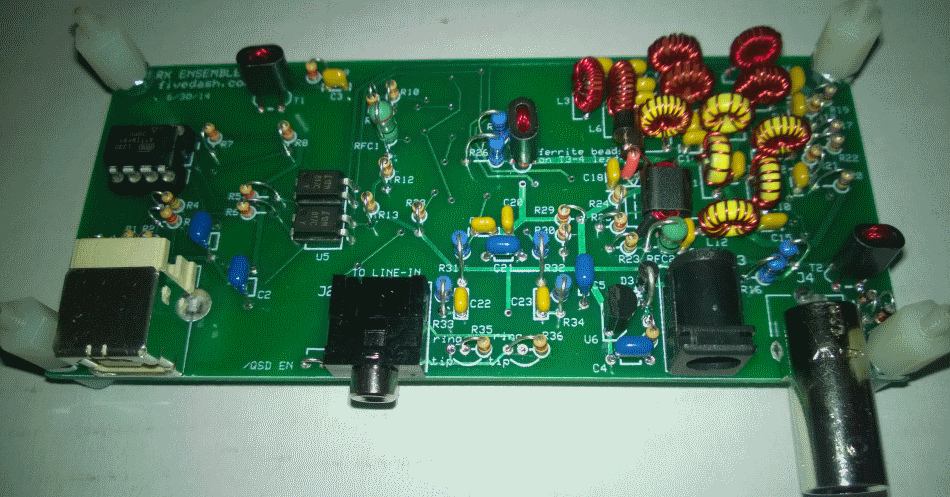
Underside
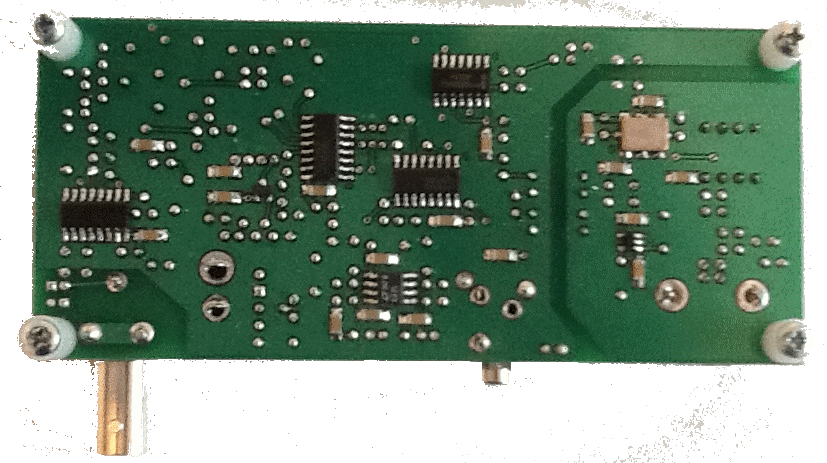
Windows SDR# software is avalible here
Linux Quisk software.
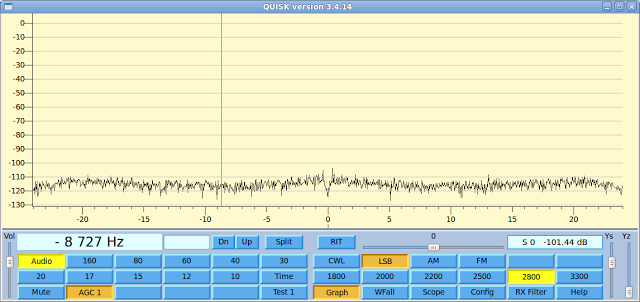
Quisk is available here
Write a review
Your Name:Your Review: Note: HTML is not translated!
Rating: Bad Good
Enter the code in the box below:
Giga Technology © 2025

